Are Carbon-Free Energy Systems Possible? NREL Has a Way To Find Out
Live Power Experiments Using NREL'S ARIES Platform Solve Future Energy Challenges in the Present
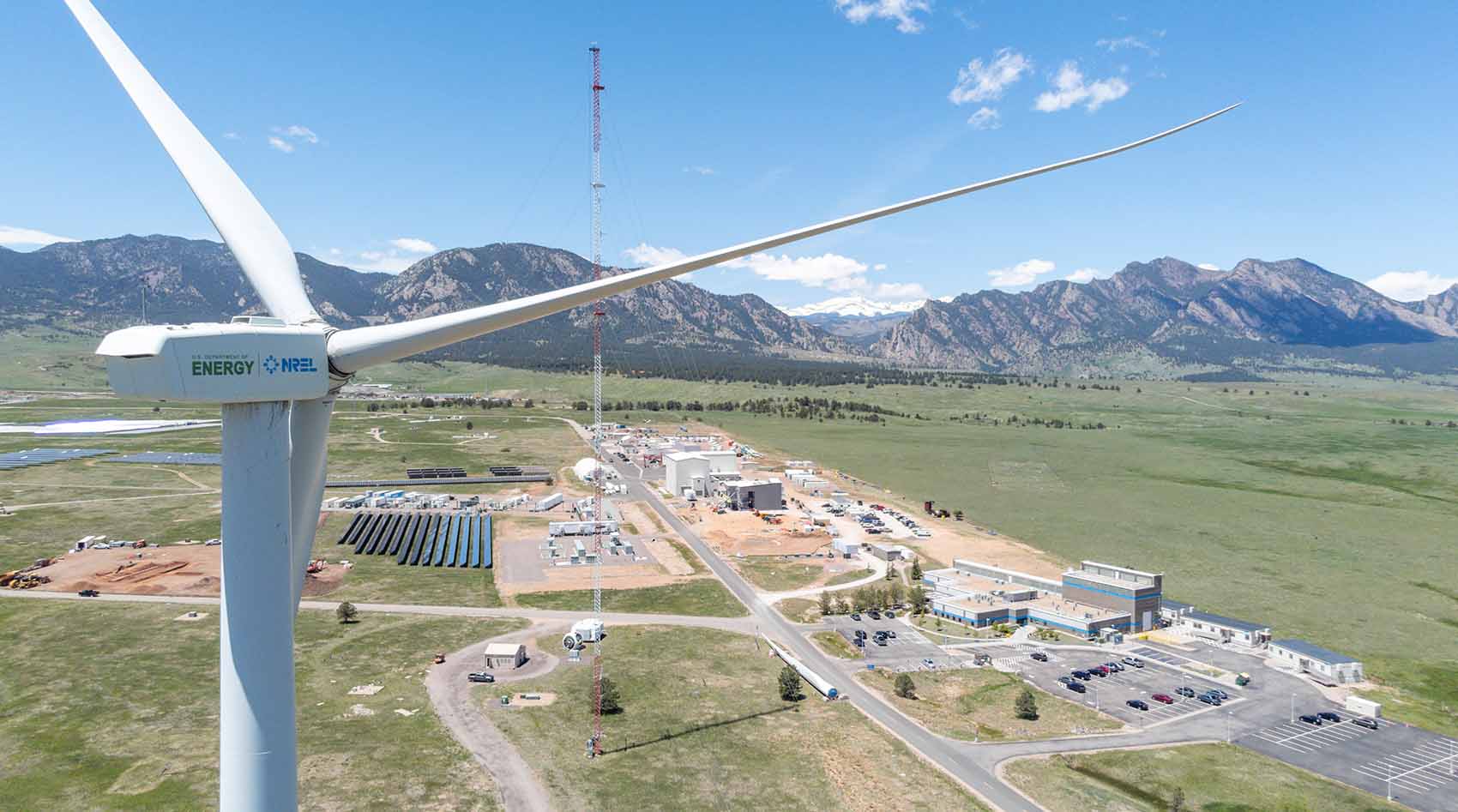
Renewable energy generation has risen for years, now supplying 22% of U.S. electricity. But the next gains will not come easy. Looming obstacles include a lack of energy storage, increasing cybersecurity threats and outages, possible electrical instabilities, and sectors that are hard to electrify.
It's a heavy list, but those exact obstacles are well known within NREL's Advanced Research on Integrated Energy Systems (ARIES) platform. In fact, researchers replicate these obstacles in both physical and virtual environments every day to vet large-scale energy solutions in action.
Like constellations that once guided explorers, ARIES helps users to orient their clean energy decisions. Following recent expansions in grid control, hydrogen, and cyber resilience, the platform can help researchers explore the greatest challenges to achieving a clean energy transformation.
Fine Control Over Experimental Power
One challenge for clean energy is the integration of diverse technologies. Power systems are becoming hybrid, distributed mixtures of solar, wind, storage, and many other energy resources. Electrically, they are nothing like we've had in the past, especially at the sub-second timescales.
To develop solutions with enough detail, engineers need the real deal for experiments: electricity like it exists in homes, between cities, and during disasters. They need to customize electricity to recreate the big research questions.
ARIES has that customizability, thanks to the controllable grid interface (CGI), which acts as an envelope on incoming power, shaping it according to scenarios, such as an oil-fired generator failing on an island full of renewables or faults affecting a wind-powered microgrid.
Past uses include:
- Validating next-generation transformers that add transmission flexibility in the U.S. Department of Energy project Grid Application Development, Testbed, and Analysis for MV SiC (GADTAMS)
- Piloting a grid-forming wind turbine with an industry partner
- Exploring hybrid power plants that mix water, wind, storage, and solar in the multi-laboratory project FlexPower.
In 2024, the CGI quadrupled in power, and it is better able to answer the many unknowns of clean energy deployed at scale.
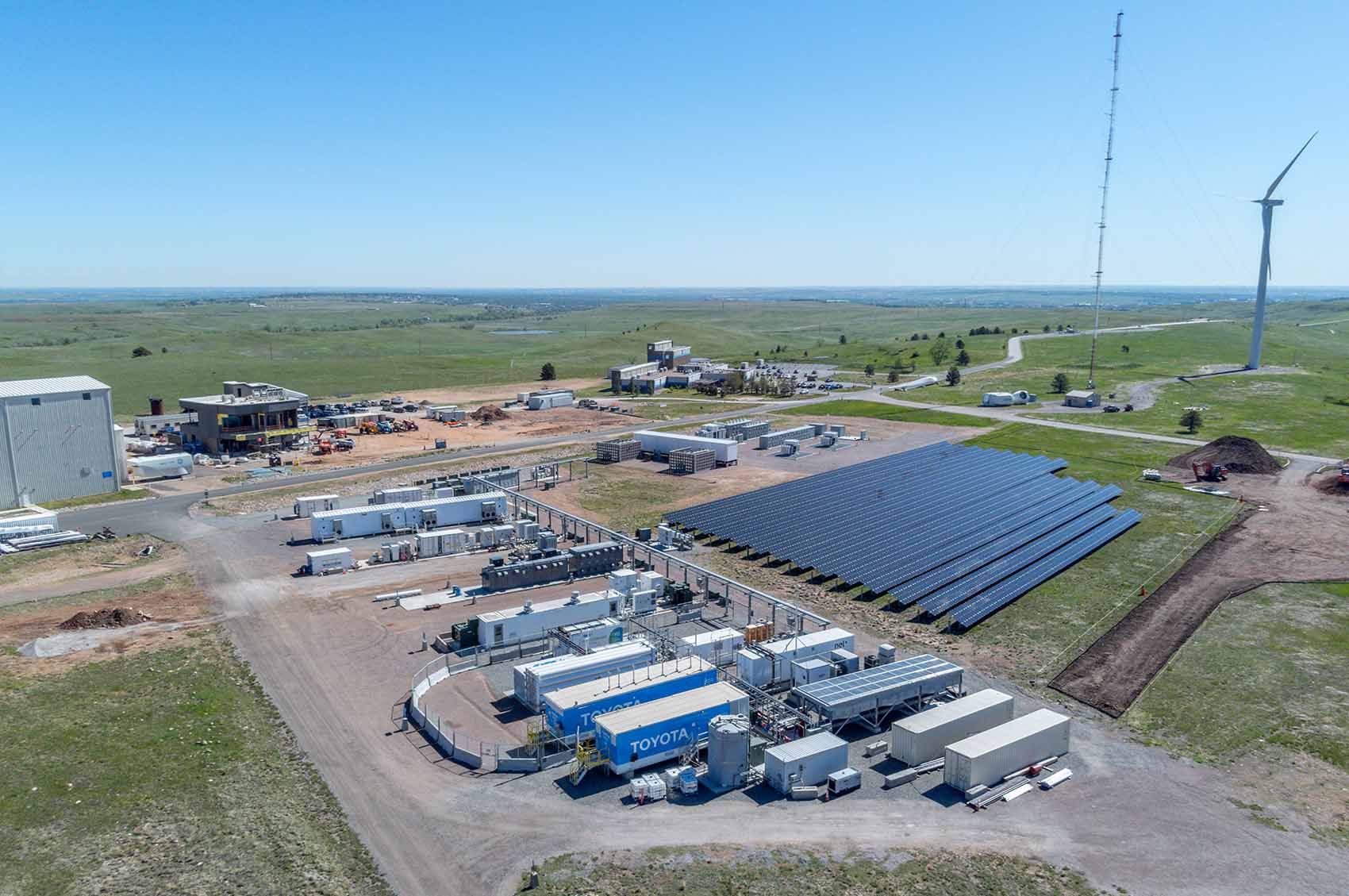
Clean Energy Demonstrations Get Larger and More Integrated
With the CGI upgrade, the interface can run two custom scenarios in parallel at 7 megavolt-amperes and 20 megavolt-amperes, and the researchers are taking advantage.
"It's bigger, a little faster, and it gives us bandwidth," said Przemyslaw Koralewicz, an architect of the interface. Prior to CGI2's completion, projects were bottlenecked by the interface's availability. Now researchers can switch between two different machines when experiments stack up, or they can even use both in the same experiment.
"In one interesting experiment as part of the SuperFACTS project, we placed a battery on one interface and a photovoltaic array on the other. Artificially, they were made to act as if they were 1,000 miles away, individually contributing to stability on the same electric grid," Koralewicz described.
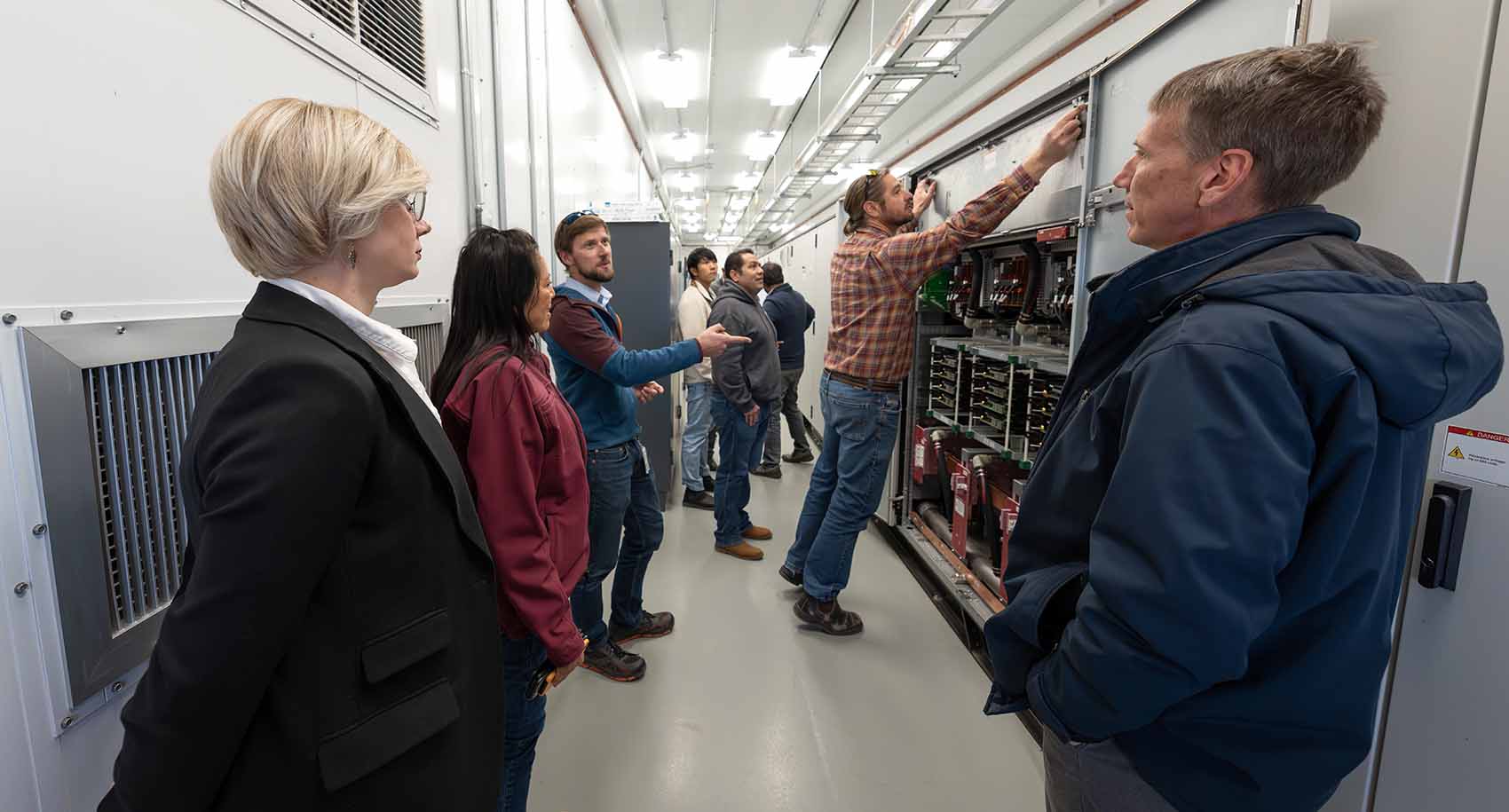
A top research goal of ARIES is to successfully integrate diverse technologies. The CGI is designed for this purpose, making it possible to catch problems of instability or unreliability within uncommon energy combinations. One example is direct current (DC) microgrids.
"It's becoming popular to explore DC microgrids. I'm pretty excited about the possibility," Koralewicz said. "DC microgrids could avoid transformers and inject power directly into the grid bus. The CGI uniquely allows us to try this."
The DC bus could charge heavy-duty vehicles directly from solar or wind resources, and it could power electrolyzers directly to produce hydrogen, possibilities that ARIES researchers are eager to study for their simpler architectures and unique pathways.
Although a DC bus is not yet available, other pathways are ready for research at ARIES. Thanks to additional infrastructure, hydrogen energy integration research is underway in a big way.
From Clean Electricity to Gas and Back
Hydrogen could singly abate several challenges in future energy systems. It's a solution for energy storage, a force for grid flexibility, and an energy-dense fuel to rival carbon compounds. It's a resource with real potential to integrate clean power, but it is lacking in experimental run time. That's why the ARIES integrated hydrogen capabilities have expanded.
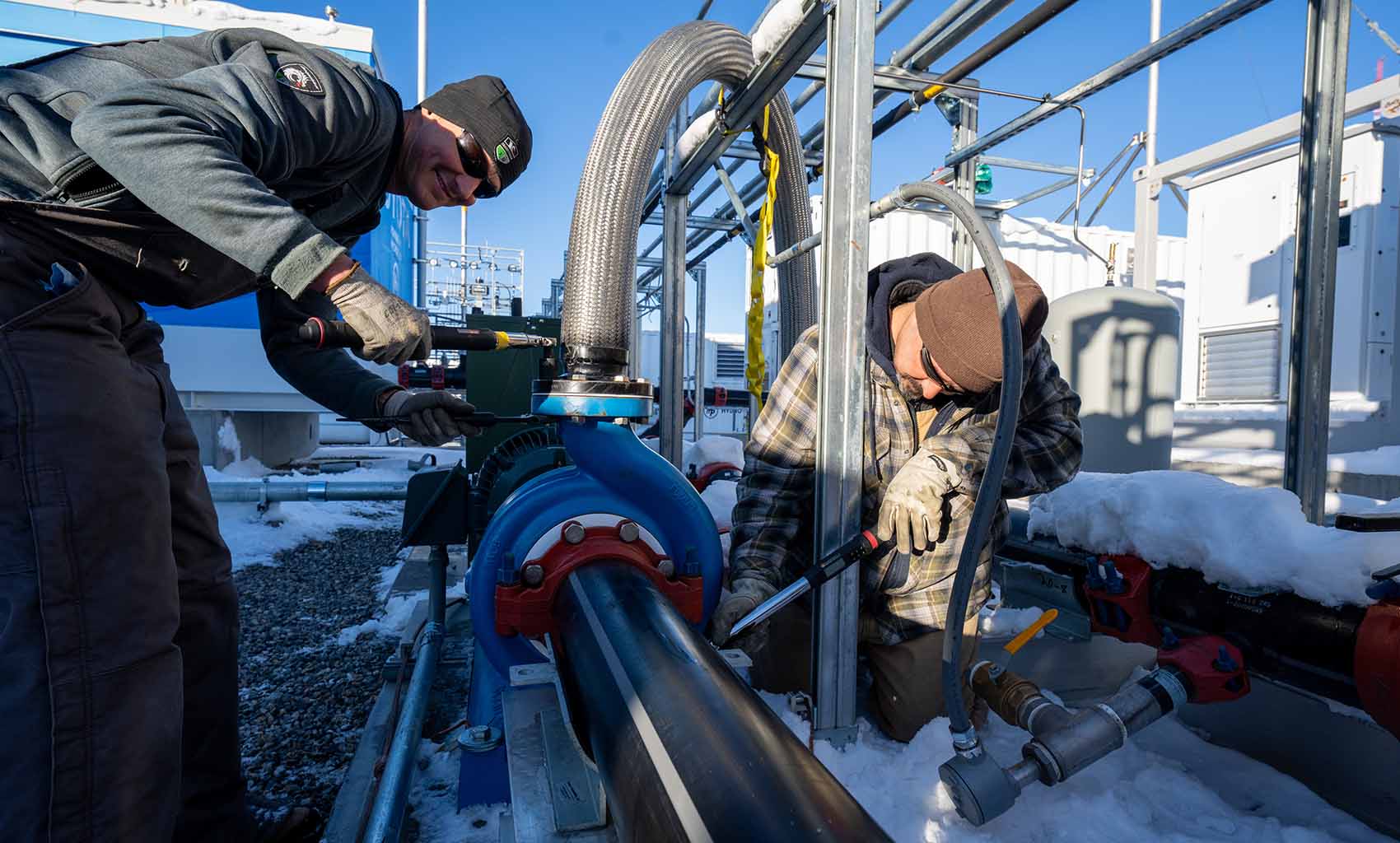
From storage tanks to fuel cells, and from water deionizers to electrolyzers, ARIES features a full circle of clean hydrogen assets. These capabilities are set apart by their close integration with other renewable assets. At a megawatt capacity, ARIES is also the proper size to pilot hydrogen pathways before going to the full grid scale, the target of the U.S. Department of Energy's H2@Scale initiative.
This capability appeals to mining companies and downstream ore processing facilities that want to decarbonize their operations, as well as to automotive companies that are curious about stationary power from fuel cells as an opportunity to enlarge their customer base.
"We commissioned and built this new equipment, and now we want to answer questions about electrolysis at the relevant scale," Daniel Leighton, NREL technical lead, said in a public presentation.
Leighton and colleagues added the new assets so that researchers can explore the options around renewably produced hydrogen.
"We'll have a pipeline that will connect to future underground storage, and we are currently validating a metal hydride storage system for low-pressure hydrogen. To validate electrolysis technologies and how they support other areas, we're building out a full balance of plant at 6 megawatts for partners to do drop-in validation," Leighton said.
Of course, none of this—neither the hybrid power plants nor the underground hydrogen caverns—means anything if integrated energy systems are not secure. It might not be as visible as pipelines, but as another core aim of ARIES, cybersecurity is increasingly everywhere and for good reason.
Sharper Cybersecurity: Attacking a Wind Turbine, Cloud Security, and Microgrid Communications
Modern organizations face a daily barrage of cyberattacks and scams, and the situation is similarly problematic for energy systems.
"We're seeing hacking software become very cheap and nation states facilitating attacks. At the same time, we see our energy systems becoming much more complex—for example, an increase in the quantity of devices operating as part of the grid," said Dane Christensen, manager of the Cyber System Assessment group at NREL.
"A loss of exclusive utility ownership over grid-interactive devices. Less tractable supply chains. A mix of legacy and modern hardware," Christensen explained. "How do we retain the benefits of all this connectivity and achieve mutual cybersecurity?"
It's a question that Christensen and colleagues are answering using the ARIES Cyber Range, which virtualizes, cosimulates, and visualizes energy system experiments.
An early demonstration of the ARIES Cyber Range was, logically, to attack a wind turbine on NREL's Flatirons Campus.
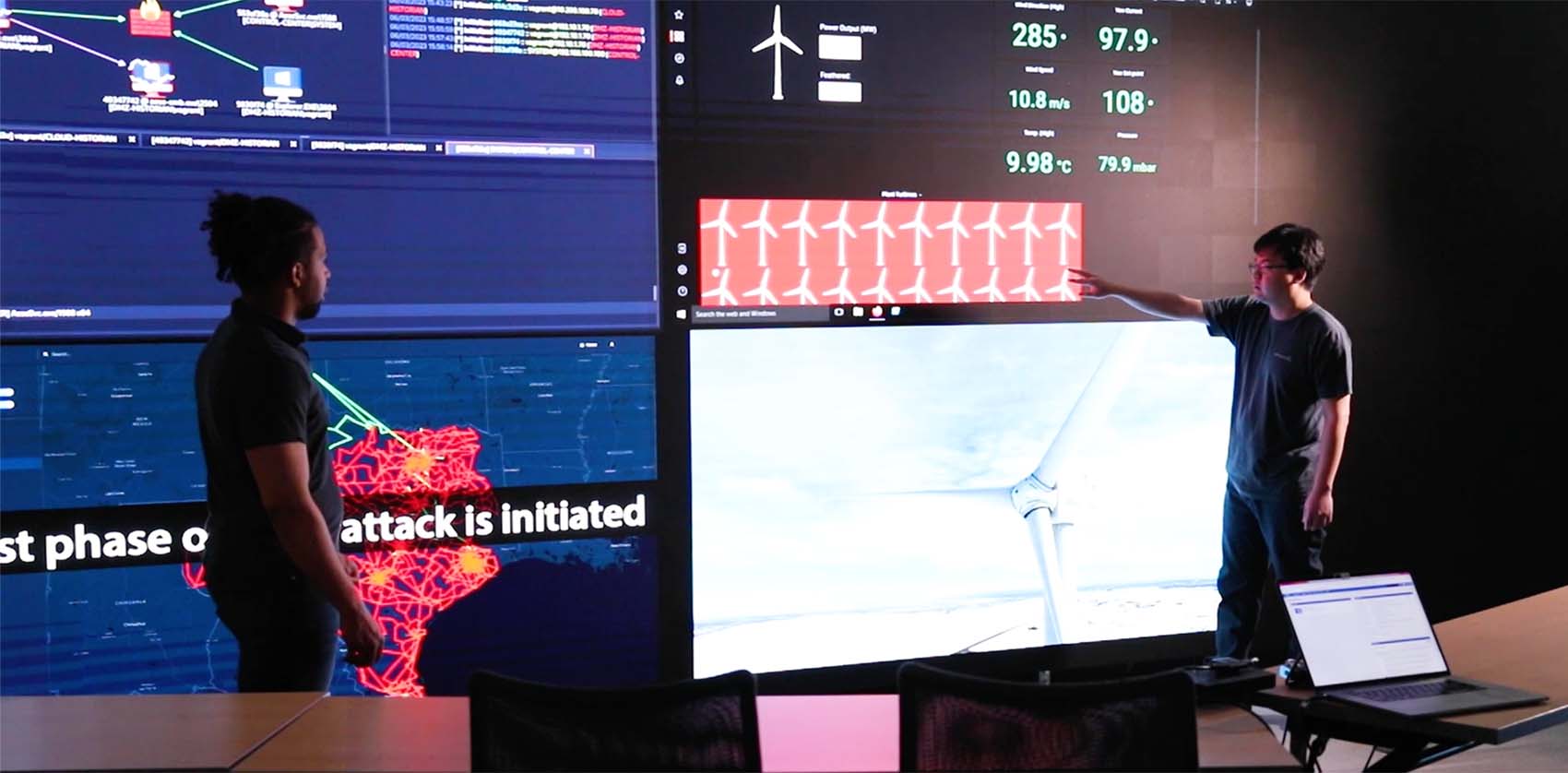
In front of a live industry audience, NREL researchers established a facsimile of a distribution utility, transmission utility, and independent wind power producer, which the researchers disabled by accessing the wind power plant's control center through vulnerabilities.
Using ARIES, they launched an attack to shut down one full-scale turbine at NREL's Flatirons Campus and an emulated wind power plant. This triggered automated safeties to impact the surrounding transmission system.
In seconds, NREL's mock attackers reduced the plant production to zero, cutting power to thousands of (simulated) people, showcasing what consequences could occur if vulnerabilities are left unpatched in energy systems and showing the usefulness of ARIES tools in addressing those vulnerabilities.
"We leverage the cyber range to employ much more realistic systems and to be able to scale our research," Christensen said. "We couple the physical and virtual in real time and track it visually. In this way, we can help mitigate the risk inherent in both newly adopted technologies and in the trusted relationships that exist across the energy sector."
The cyber-physical union at ARIES has redefined clean energy research. This is evident in a 5G microgrid platform, where utilities can assess wireless operations, and in CloudZero, where they can assess the cloud management of complex energy systems.
Like all challenges ahead for clean energy systems, cybersecurity becomes surmountable when researchers can have the real systems right in front of them, using ARIES.
Stay Tuned, Reach Out, Learn More
New opportunities continually appear for clean energy, which suits the underlying build of ARIES: Its hardware is reconfigurable and with digital simulators, scalable. ARIES researchers have a versatile electric grid at their fingertips, and they are just breaking the surface of what is possible on this research platform.
Three key technical challenges guide ARIES research. Partners facing these same challenges can use the ARIES capabilities to evaluate and explore their options.
Nearing five years of being online, ARIES is equipped for another generation of experiments, and it continues to grow. If you are interested in partnering with NREL, contact [email protected]. These partnering examples are open now:
- H2@Scale Cooperative Research and Development Agreement Call
- Utility and Grid Operator Technical Assistance.
Visit nrel.gov/aries to learn more.
The ARIES platform is supported by the Department of Energy Office of Energy Efficiency and Renewable Energy.
Last Updated May 28, 2025
